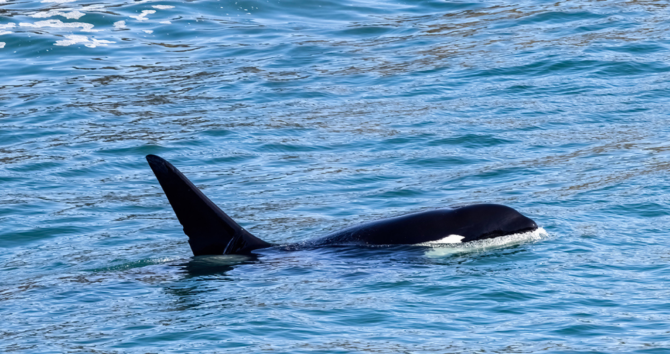Community Science
Help researchers learn about the lives of killer whales off the Oregon Coast.
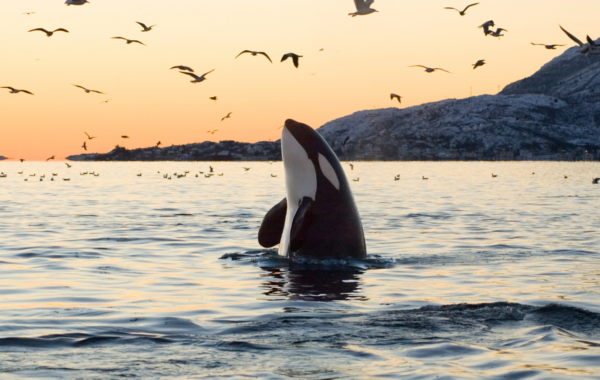
The Oregon Coast Killer Whale Monitoring Program
The goal of the Oregon Coast Killer Whale Monitoring Program is to collect current information about the killer whales who spend time off the coast of Oregon. When reporting, include the time of sighting, location, and direction of travel. Any additional information, such as the number of individuals or behavior, is also welcome.
Please maintain a safe distance and be a responsible steward on land or sea. Thank you so much for contributing information about the ocean’s top predator.
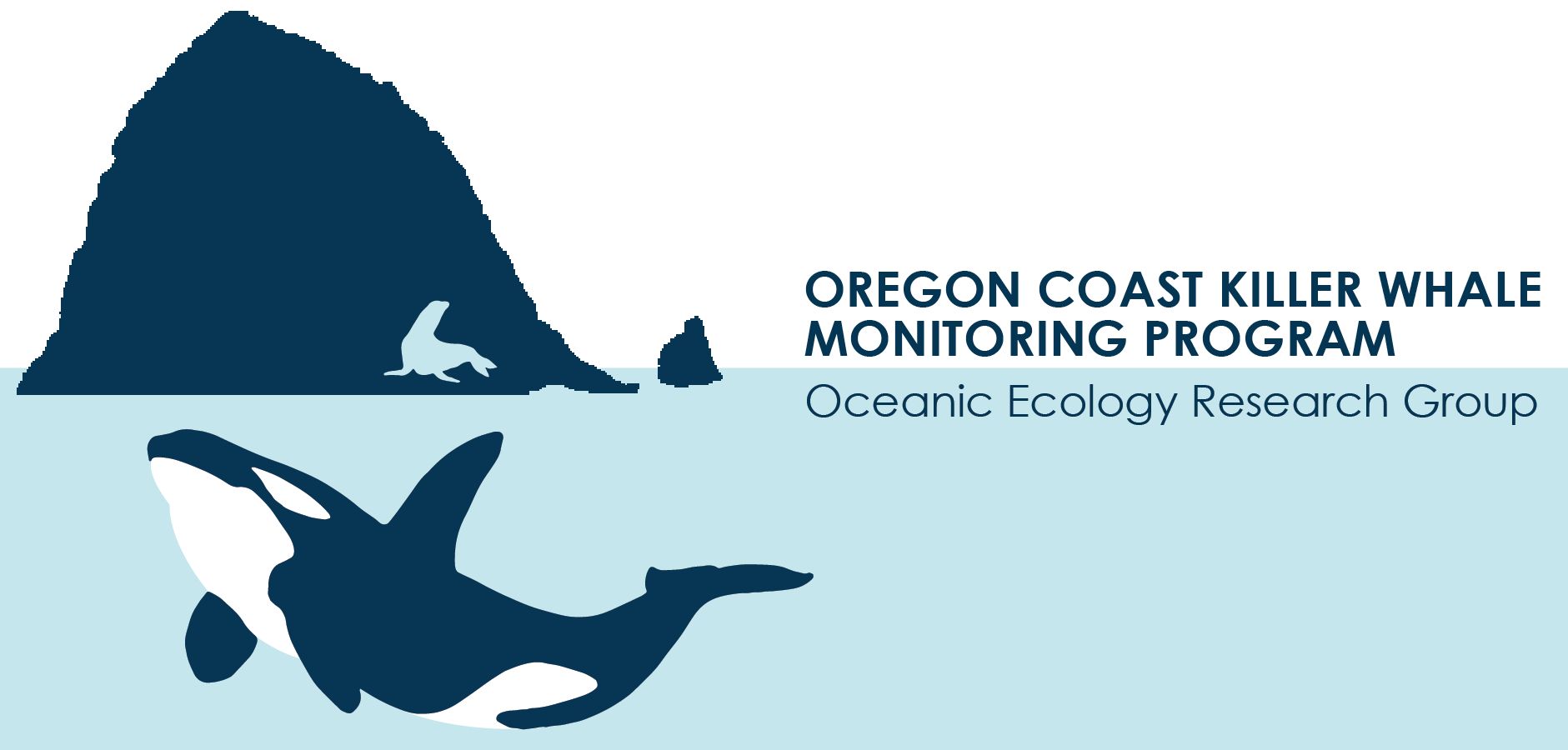
Have a past sighting to share? Submit those as well!
Identifying Individuals
Similar to many other types of cetaceans, killer whales, also known as orcas, can be distinguished from one another based on their natural markings and variations in the shape of their fins.
Orcas have a distinctive dorsal fin, which exhibits differences in shape and size, often featuring unique marks such as nicks, indentations, and scars. Additionally, the whitish-grey pigmentation on their backs, known as their saddle patch, varies in shape, size, color, and the presence of scratches and scars from one individual to another.
Much like a human fingerprint, each saddle patch is distinct, aiding in the identification of individual orcas. This individual identification process within the Southern Resident orca community enables the precise tracking of the population through an annual census, ensuring that each whale is recognized and accounted for.
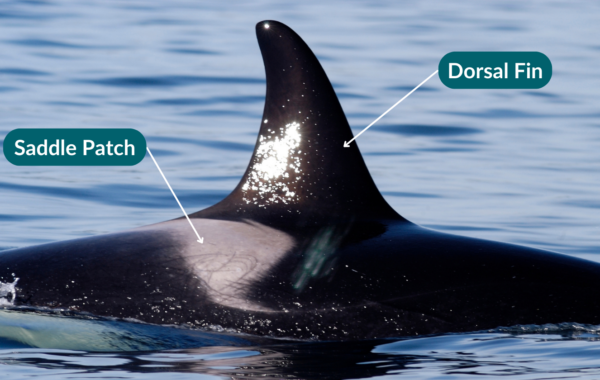
Killer Whale Ecotypes
Did you know that off the coast of Oregon you could spot three distinct ecotypes of killer whales? These ecotypes are known as Southern Resident, transient, and offshore killer whales. Each ecotype has unique behaviors and diet preferences, highlighting killer whales’ diverse roles in the Oregon coast’s marine ecosystem.
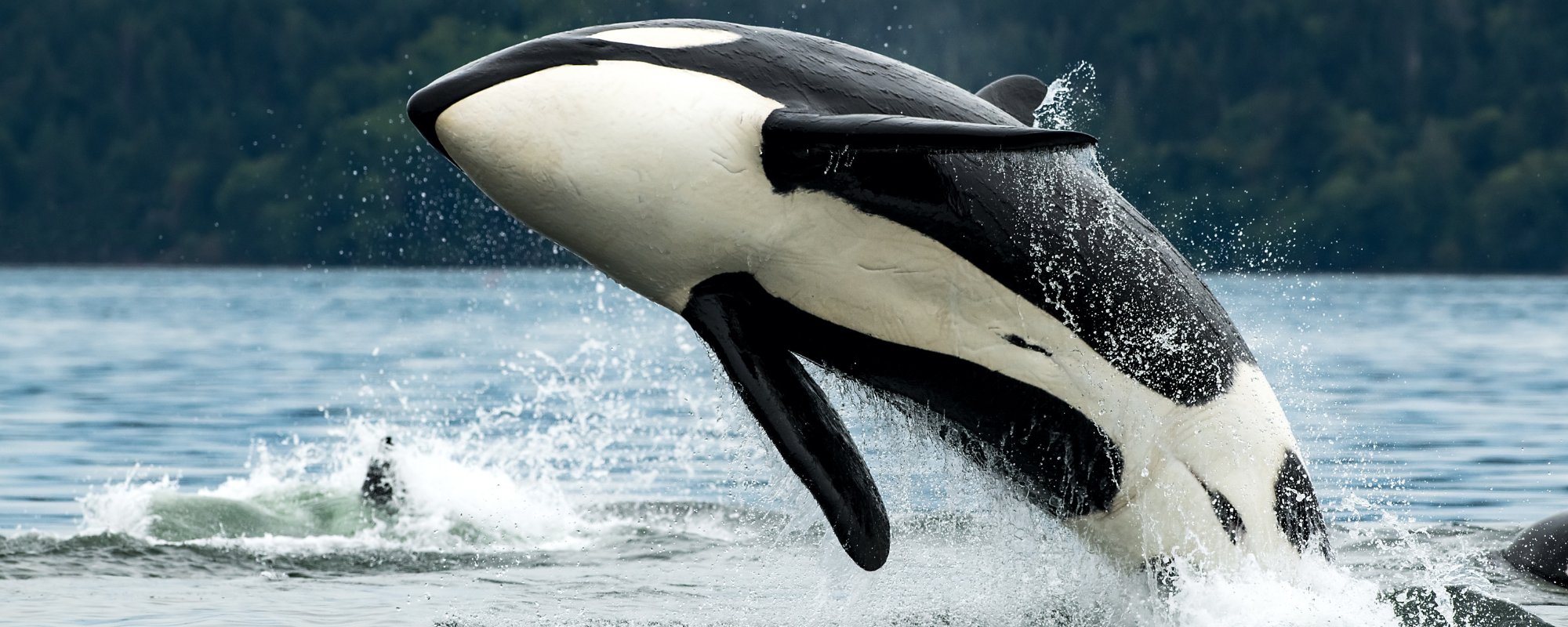
Southern Resident killer whales spend the majority of their time in the Salish Sea but depend on the waters south of them (including the entire Oregon coast and down to Monterey, California) for winter hunting. They feed primarily on Chinook salmon, a species that is also in need of increased conservation efforts.
Although they have been federally listed as endangered since 2005, their recent addition to the Oregon Endangered Species Act (OESA) allocates additional resources to aid them. Oregon waters were identified as a critical habitat in 2021 and these new guidelines established by the OESA provide additional tools and approaches for local and regional action through the Oregon Department of Fish and Wildlife (ODFW).
Transient killer whales are known for their hunting prowess, often preying on marine mammals such as seals and sea lions. Transients are the most commonly reported ecotype in Oregon waters.
Offshore killer whales are rarely seen near the shore and are believed to primarily feed on sharks and other fish.
Oregon’s Orcas Too
Oregon and Washington must work together to save the Southern Residents orcas from going extinct.
Feb 7, 2024
Ecosystem Focused Conservation
Learn more about our work to protect Oregon's estuaries, which are critical habitat for the salmon Southern Resident killer whales depend on.

Campaign for Oregon’s Estuaries
The goal of the Campaign for Oregon’s Estuaries is to build a strong popular movement for conserving our estuarine resources based on a broad public understanding of the importance of these places where rivers meet the sea.
To join a community science project, start by adopting a CoastWatch Mile
Community Science

